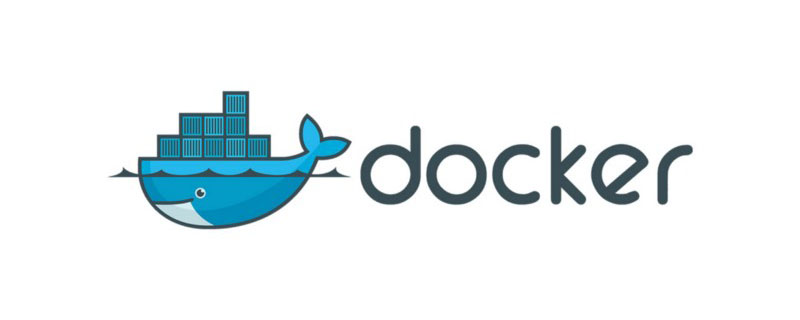 Operation and Maintenance
Operation and Maintenance Linux Operation and Maintenance
Linux Operation and Maintenance Tutorial: Install Symfony using Docker containerization
Tutorial: Install Symfony using Docker containerization
Tutorial: Installing Symfony using Docker containerization
Introduction:
Docker is an open source containerization platform that can help developers quickly build, package and Deploy the application. Symfony is a popular PHP framework that provides many powerful tools and components for developing high-performance web applications. In this tutorial, we will explain how to install Symfony using Docker containerization and provide specific code examples for reference.
Step 1: Install Docker and Docker Compose
First, we need to install Docker and Docker Compose on our development machine. Please follow the instructions in the official Docker documentation to install it.
Step 2: Create a Symfony project
Before we start, we need to create a Symfony project. Open a terminal and execute the following command:
$ composer create-project symfony/skeleton symfony_project
This will create a Symfony project named symfony_project in the current directory.
Step 3: Create a Docker file
In the same directory as the Symfony project, create a file named docker-compose.yml and add the following content:
version: '3.8'
services:
web:
image: php:7.4-apache
volumes:
- ./symfony_project:/var/www/html
ports:
- 8080:80
depends_on:
- database
database:
image: mysql:5.7
environment:
- MYSQL_DATABASE=your_database_name
- MYSQL_USER=your_username
- MYSQL_PASSWORD=your_password
- MYSQL_ROOT_PASSWORD=your_root_password
volumes:
- ./mysql:/var/lib/mysql Please make sure to replace your_database_name, your_username, your_password and your_root_password with your own database name, username, password and administrator password.
Step Four: Build and Run the Docker Container
In the terminal, navigate to the directory containing the docker-compose.yml file and execute the following command:
$ docker-compose up -d
This will build and run the Docker container. The -d option will run the container in background mode.
Step 5: Access the Symfony application
Open the browser and visit http://localhost:8080. You should be able to see the Symfony welcome page. Now, you can start developing and testing in your Symfony project.
Step 6: Access the Symfony container through the command line
If you need to execute commands within the Symfony container, you can use the following command:
$ docker-compose exec web bash
This will enter the bash shell of the Symfony container. In this shell, you can execute any command related to the Symfony project.
Conclusion:
By using Docker containerization to install Symfony, we can quickly build and manage the development environment of the Symfony project, reducing the trouble caused by environment configuration issues and improving development efficiency. Hope this tutorial will be helpful to you.
The above is the detailed content of Tutorial: Install Symfony using Docker containerization. For more information, please follow other related articles on the PHP Chinese website!
 docker中rm和rmi有什么区别Jul 14, 2022 am 11:02 AM
docker中rm和rmi有什么区别Jul 14, 2022 am 11:02 AMdocker中rm和rmi的区别:rm命令用于删除一个或者多个容器,而rmi命令用于删除一个或者多个镜像;rm命令的语法为“docker rm [OPTIONS] CONTAINER [CONTAINER...]”,rmi命令的语法为“docker rmi [OPTIONS] IMAGE [IMAGE...]”。
 docker官方镜像有哪些May 12, 2022 pm 02:23 PM
docker官方镜像有哪些May 12, 2022 pm 02:23 PMdocker官方镜像有:1、nginx,一个高性能的HTTP和反向代理服务;2、alpine,一个面向安全应用的轻量级Linux发行版;3、busybox,一个集成了三百多个常用Linux命令和工具的软件;4、ubuntu;5、PHP等等。
 docker是免费的吗Jul 08, 2022 am 11:21 AM
docker是免费的吗Jul 08, 2022 am 11:21 AMdocker对于小型企业、个人、教育和非商业开源项目来说是免费的;2021年8月31日,docker宣布“Docker Desktop”将转变“Docker Personal”,将只免费提供给小型企业、个人、教育和非商业开源项目使用,对于其他用例则需要付费订阅。
 docker容器重启后数据会丢吗Jun 17, 2022 am 10:41 AM
docker容器重启后数据会丢吗Jun 17, 2022 am 10:41 AMdocker容器重启后数据会丢失的;但是可以利用volume或者“data container”来实现数据持久化,在容器关闭之后可以利用“-v”或者“–volumes-from”重新使用以前的数据,docker也可挂载宿主机磁盘目录,用来永久存储数据。
 docker能安装oracle吗Jul 08, 2022 pm 04:07 PM
docker能安装oracle吗Jul 08, 2022 pm 04:07 PMdocker能安装oracle。安装方法:1、拉取Oracle官方镜像,可以利用“docker images”查看镜像;2、启动容器后利用“docker exec -it oracle11g bash”进入容器,并且编辑环境变量;3、利用“sqlplus /nolog”进入oracle命令行即可。
 docker存储空间不足怎么办Jul 22, 2022 pm 03:44 PM
docker存储空间不足怎么办Jul 22, 2022 pm 03:44 PM解决方法:1、停止docker服务后,利用“rsync -avz /var/lib/docker 大磁盘目录/docker/lib/”将docker迁移到大容量磁盘中;2、编辑“/etc/docker/daemon.json”添加指定参数,将docker的目录迁移绑定;3、重载和重启docker服务即可。
 什么是docker最早支持的存储引擎May 12, 2022 pm 03:27 PM
什么是docker最早支持的存储引擎May 12, 2022 pm 03:27 PMAUFS是docker最早支持的存储引擎。AUFS是一种Union File System,是文件级的存储驱动,是Docker早期用的存储驱动,是Docker18.06版本之前,Ubuntu14.04版本前推荐的,支持xfs、ext4文件。
 docker容器管理ui有哪些May 11, 2022 pm 03:39 PM
docker容器管理ui有哪些May 11, 2022 pm 03:39 PM容器管理ui工具有:1、Portainer,是一个轻量级的基于Web的Docker管理GUI;2、Kitematic,是一个GUI工具,可以更快速、更简单的运行容器;3、LazyDocker,基于终端的一个可视化查询工具;4、DockStation,一款桌面应用程序;5、Docker Desktop,能为Docker设置资源限制,比如内存,CPU,磁盘镜像大小;6、Docui。


Hot AI Tools

Undresser.AI Undress
AI-powered app for creating realistic nude photos

AI Clothes Remover
Online AI tool for removing clothes from photos.

Undress AI Tool
Undress images for free

Clothoff.io
AI clothes remover

AI Hentai Generator
Generate AI Hentai for free.

Hot Article

Hot Tools

SublimeText3 English version
Recommended: Win version, supports code prompts!

Zend Studio 13.0.1
Powerful PHP integrated development environment

Atom editor mac version download
The most popular open source editor

MinGW - Minimalist GNU for Windows
This project is in the process of being migrated to osdn.net/projects/mingw, you can continue to follow us there. MinGW: A native Windows port of the GNU Compiler Collection (GCC), freely distributable import libraries and header files for building native Windows applications; includes extensions to the MSVC runtime to support C99 functionality. All MinGW software can run on 64-bit Windows platforms.

Dreamweaver Mac version
Visual web development tools




